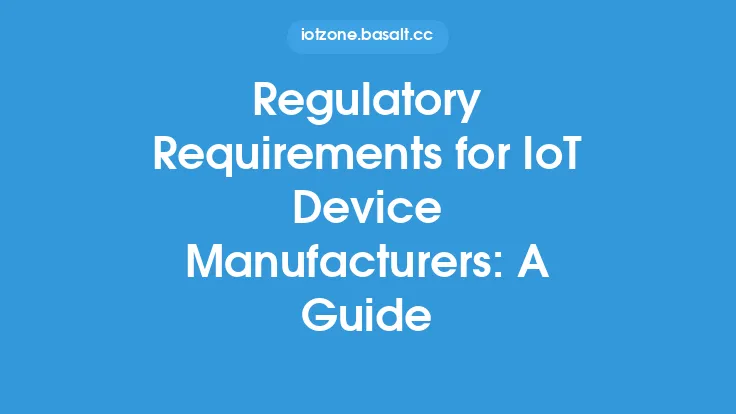As the number of Internet of Things (IoT) devices continues to grow, the importance of firmware updates and security has become a pressing concern for device owners. Firmware is the software that is embedded in a device's hardware, and it plays a critical role in determining the device's functionality, performance, and security. In this article, we will delve into the world of firmware updates and security, exploring the reasons why they are essential, the types of firmware updates, and the best practices for ensuring the security of IoT devices.
Introduction to Firmware Updates
Firmware updates are essential for IoT devices as they provide a way to fix security vulnerabilities, improve performance, and add new features. Firmware updates can be used to patch security holes, update encryption protocols, and improve the overall security posture of a device. However, firmware updates can also be a source of security risks if not implemented properly. For example, if a firmware update is not properly validated, it can introduce new security vulnerabilities or even brick the device.
Types of Firmware Updates
There are several types of firmware updates, including delta updates, full updates, and over-the-air (OTA) updates. Delta updates involve updating only the parts of the firmware that have changed, while full updates involve updating the entire firmware image. OTA updates, on the other hand, involve updating the firmware wirelessly, without the need for a physical connection. Each type of update has its own advantages and disadvantages, and the choice of update type depends on the specific use case and requirements of the device.
Security Risks Associated with Firmware Updates
Firmware updates can pose several security risks, including the introduction of new vulnerabilities, data corruption, and device bricking. For example, if a firmware update is not properly validated, it can introduce new security vulnerabilities that can be exploited by attackers. Similarly, if a firmware update is not properly tested, it can cause data corruption or device bricking. To mitigate these risks, it is essential to implement robust security measures, such as secure boot mechanisms, encryption, and secure update protocols.
Best Practices for Firmware Updates and Security
To ensure the security of IoT devices, it is essential to follow best practices for firmware updates and security. These include implementing secure boot mechanisms, using encryption, and validating firmware updates before installation. Additionally, device owners should ensure that their devices are configured to receive automatic firmware updates, and that they are using secure update protocols, such as HTTPS or SSH. It is also essential to monitor device behavior and performance after a firmware update, to detect any potential security issues or anomalies.
Secure Boot Mechanisms
Secure boot mechanisms are an essential component of IoT device security, as they ensure that only authorized firmware is loaded onto the device. Secure boot mechanisms involve using cryptographic techniques, such as digital signatures and hash functions, to validate the authenticity and integrity of the firmware. This prevents attackers from loading malicious firmware onto the device, and ensures that the device boots up with a known good state.
Encryption and Secure Update Protocols
Encryption and secure update protocols are also essential for ensuring the security of firmware updates. Encryption involves using cryptographic techniques, such as AES or RSA, to protect the firmware update from tampering or eavesdropping. Secure update protocols, such as HTTPS or SSH, involve using secure communication protocols to transfer the firmware update from the server to the device. This ensures that the firmware update is not tampered with or intercepted during transmission.
Validation and Testing of Firmware Updates
Validation and testing of firmware updates are critical to ensuring the security and reliability of IoT devices. Validation involves verifying that the firmware update is authentic and has not been tampered with, while testing involves verifying that the firmware update does not introduce any new security vulnerabilities or bugs. Device owners should ensure that firmware updates are thoroughly tested and validated before installation, to prevent any potential security issues or anomalies.
Conclusion
In conclusion, firmware updates and security are essential for ensuring the security and reliability of IoT devices. By following best practices, such as implementing secure boot mechanisms, using encryption, and validating firmware updates, device owners can ensure that their devices are protected from security threats. Additionally, by monitoring device behavior and performance after a firmware update, device owners can detect any potential security issues or anomalies, and take corrective action to prevent any security breaches. As the IoT ecosystem continues to evolve, the importance of firmware updates and security will only continue to grow, and it is essential that device owners prioritize these aspects to ensure the security and reliability of their devices.





